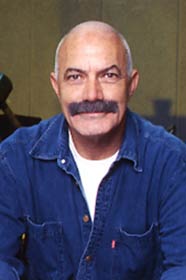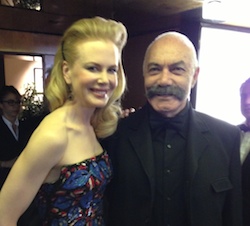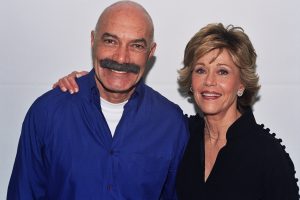



“There’s no place like home!”
One of the most beloved family films of all time is out in a restored 3-D edition. May I suggest that this fantasy fable is enchanting in every form and format you see it.
Voted by the American Film Institute (AFI) as the Best Family Film of all time, “The Wizard of Oz” has charmed audiences of every age for more than 60 years.
On October 25, Warner Home Video (WHV) will celebrate this beloved classic with two bonus-packed DVD treasuries: a Two-Disc Special Edition and a Three-Disc Collector’s Edition. For the very first time, these versions of “Wizard of Oz” boast a new digital transfer of the original film, using Warner’s Ultra-Resolution technology, plus a newly re-mastered soundtrack. As a result, viewers will experience the movie’s Technicolor splendor and unforgettable, award-winning songs and music like never before.
“Wizard of Oz” and “Gone with the Wind,” both released in 1939, stand together in the popular imagination as the two greatest Hollywood films ever made, one ostensibly for children, the other for adults.
However, the influence of “Wizard of Oz” on multiple generations of adults, who first saw the film as children, is far greater than that of “GWTW,” which is more problematic in its view of slavery and celebration of gallant Southern plantation lifestyle/
In 1990, images from both films came to grace commemorative 50th anniversary postal stamps. While the image of Rhett and Scarlett embracing has come to represent ideals of romantic love in America, the image of Dorothy and friends skipping down the Yellow Brick Road is more complex, containing associations with youth, community, family, and progress.
Images (and songs) from “Wizard of Oz” have become such a solid part of American culture that they are almost a language unto themselves, what Aljean Harmetz calls a “shorthand in the marketplace.” Many cartoonists and advertisers have borrowed the imagery and characters from the film, without needing to explain the references to their audience. The film’s yellow brick road has reappeared in many contexts, including the cover of Elton John’s album Goodbye Yellow Brick Road, which featured the hit song of the same title.
Repeatedly referred to as a film for children of all ages, “Wizard of Oz” has become a part of growing up in America, while its narrative offers a definition of what growing up in America is all about. This is achieved through the story of Dorothy, who must find her way home from the childish Never-Never Land of Oz to become a mature woman. “Wizard of Oz” has been sanctioned as a central fairy tale of American popular culture, because it teaches us how to become assimilate, in a distinctly American way.
Both DVD editions offer extensive bonus content, including four revealing new documentaries; a new feature-length commentary by producer and Oz historian John Fricke; a documentary hosted by Angela Lansbury; a Lansbury-narrated onscreen storybook treatment of The Wonderful Wizard of Oz with colorful original illustrations; outtakes and deleted scenes; vintage vault featurettes; and more than six hours of audio-only treasures, including original recording sessions for songs and underscoring and rare Oz radio programs.
Wizard of Oz Three-Disc Collector’s Edition includes an additional disc of special content, featuring a new documentary about Oz author L. Frank Baum and a newly restored transfer of the 1925 feature-length silent version of “Wizard of Oz” starring Oliver Hardy and Larry Semon with a fresh score by Robert Israel. Disc three is also highlighted by several additional rare Oz film features and shorts, originally produced between 1910 and 1933. In addition to the bonus disc, the Collector’s Edition DVD will include reproductions of the original eight-page Grauman’s Chinese Theatre Oz souvenir program from August 15, 1939, the invitation to that premiere; the sixteen-page Metro-Goldwyn-Mayer Studio News magazine from August 14, 1939, celebrating The Wizard of Oz; nine beautifully restored natural color Kodachrome portraits and publicity photos from the film…and more.
Adapted from L. Frank Baum’s timeless children’s tale about a Kansas girl’s journey over the rainbow, “Wizard of Oz” opened at Loew’s Capitol Theatre in New York on August 17, 1939. The film was directed by Victor Fleming (who that same year directed “Gone With the Wind”), produced by Mervyn LeRoy, and scored by Herbert Stothart, with music and lyrics by Harold Arlen and E.Y. Harburg. Ray Bolger appeared as the Scarecrow; Bert Lahr as the Cowardly Lion, Jack Haley as the Tin Woodman, and Frank Morgan was seen in six different roles, including that of the “wonderful Wizard” himself.
Dorothy was portrayed by a 4’11” sixteen year old girl who quickly earned her reputation as “the world’ greatest entertainer”– the incomparable Judy Garland. “Wizard of Oz” received five Academy Award nominations, including Best Picture, and captured two Oscars: Best Song (“Over the Rainbow”) and Best Original Score, plus a special award for Outstanding Juvenile Performance by Judy Garland.
The Wizard of Oz was an overwhelming popular and critical success upon its initial release and repeated its ability to captivate audiences when M-G-M reissued the film in 1949 and 1955. The film made a new kind of history with its network television premiere in 1956 on CBS. Nearly 45 million people tuned in for this initial telecast, marking the beginning of a tradition. Ever since, “Wizard of Oz” has been shown virtually annually on network (and then cable) television; its magical story and heartfelt performances have enabled it to grow from a perennial classic to its current status as a treasured icon of popular culture.
Gay Context/Subtext:
Viewed from a more contemporary perspective, viewers inevitably recognize the gay subtext, when Bert Lahr’s Cowardly Lion says: “Yeah, it’s sad, believe me missy, when you’re born to be a sissy–I’m afraid there’s no denying. I’m just a dandy lion.”










